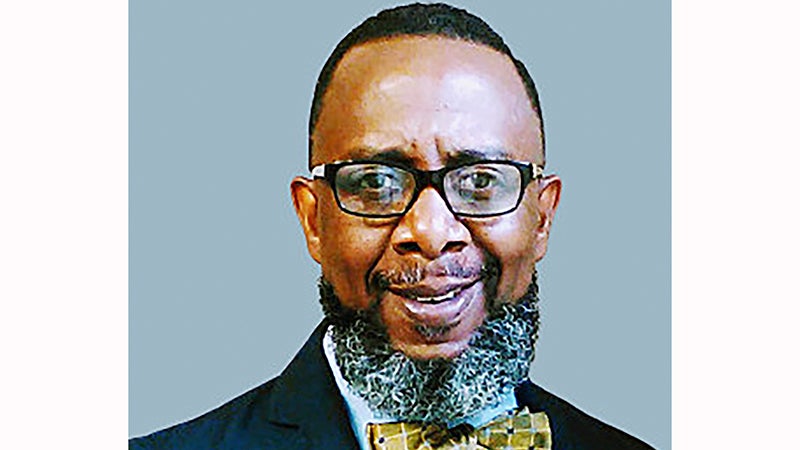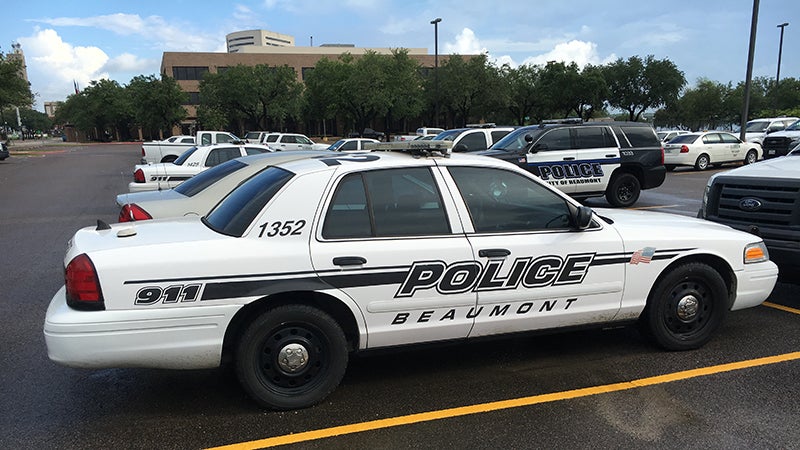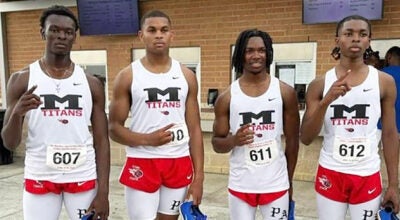Q&A: Port Arthur native talks carbon emissions, business impacts
Published 12:42 am Friday, August 20, 2021

- Tarique J. Rashaud (Courtesy photo)
|
Getting your Trinity Audio player ready...
|
Port Arthur native Tarique J. Rashaud’s love of science has led him to co-chair the U.S. Business Council for Sustainable Development’s Gulf Coast Carbon Collaborative Electrification Workgroup.
Rashaud is a 1987 graduate of Abraham Lincoln High School.
According to Carbon Collaborative.org, “Gulf Coast Carbon Collaborative is driven by business and focused on developing and implementing initiatives that reduce carbon emissions across the economy while minimizing business impacts.”
Port Arthur Newsmedia caught up with Rashaud to ask him about the effort and his science roots.
What is a “sustainability finance advisor?”
As a sustainability finance advisor for NRG, I advise large commercial and industrial asset owners on best-fit financing options for their renewable energy or micro-grid projects. Whereas I tailor finance solutions, which help preserve CAPEX (capitol expenditure) budgets while increasing a project’s Internal Rate of Returns and post commissioning cash flow.
On a municipal level, a key part of my role is to design sustainability and resilience impact analysis and solutions that facilitate municipal planning, development and execution of initiatives around climate action, environmental justice and green economy capacity building.
How did you go from Port Arthur to working for NRG Energy Inc. and being on the Industrial Advisory Board of Prairie View A&M University’s Engineering Department?
Without question, my love for science began to materialize while progressing through the PAISD pipeline. Fortunately during that period, my zeal for science was noticed by my father as well as some of my science instructors – particularly Mr. Bannister Baptiste at Woodrow Wilson, and Mr. Ronald Spooner at Lincoln. In all cases, in a nutshell, they each encouraged me to “stop playing,” challenge myself academically and seriously consider science or engineering as a career path. I’m sure in some way they were instrumental in my attending The University of Texas’ Texas Science Symposium while in high school — an experience that served to solidify my love of both science and engineering.
Upon reflection, the impact of them having planted seeds of possibility within me cannot be marginalized. So after graduating from Lincoln in 1987, I went on to receive a bachelors of science in mechanical engineering from Prairie View A&M University in 1992. For the following 10 years post graduation, I’ve worked in the power generation industry for companies like General Electric and Asea Brown Boveri until starting my own consulting firm in 2003.
Ironically, one of my firm’s first contracts was with Entergy-Texas to identify, market and execute energy efficiency measures within their low-to-moderate income service areas of Port Arthur and Beaumont.
By engaging my elder brothers, who were residents of Port Arthur, and the local non-profit Project Access, we were able to identify, qualify and provide energy conservation services to no less than 50 LMI-C (low to moderate income communities) homeowners in the service area.
Thereafter, I consulted in the energy efficiency, energy procurement and renewable energy space for 17 years until the onset of the COVID-19 pandemic in 2020 and the devastating economic impacts it unleashed on the nations commercial and financial sectors. It was during that time I was offered a unique opportunity with NRG Energy to not only join their sustainability advisory team, but to help develop a STEM engagement with my Alma Mater PVAMU.
I leaped at the opportunity as it allowed me to continue my professional pursuits around climate change initiatives. But most importantly, NRG’s commitment to environmental and social governance was directly aligned with my personal ethos and work in the areas of community outreach and STEM with organizations like the Wise Pearl Foundation founded by Port Arthur native and classmate Dr. Marilyn Parker.
Subsequently, during the development of the NRG+PVAMU Collaborative STEM initiative, I accepted a seat on PVAMU’s Industrial Advisory Board, which helps ensure that its engineering curriculum remains cutting-edge and closely aligned with the prevailing needs of industry — especially in the areas of power generation, carbon sequestration and artificial intelligence.
Can you, in layman’s terms, explain your contribution to the Biden-Harris CLEEN Project?
As the Co-Chair of the USBCSD’s Gulf Coast Carbon Collaborative Electrification Workgroup, I help lead a cross-industry consortium designed to mobilize the collective subject matter expertise of Gulf Coast corporations to create measurable, long-term impacts in reducing carbon emissions while enhancing the region’s economic vitality.
Through this role I was able to engage the USBCSD with public-private partners from academia and industry to develop a feasible, science-based project solution that directly supported the goals and objectives of the Biden-Harris CLEEN Project. In execution, this included active collaborations between the USBCSD, Prairie View A&M’s Engineering Dept., The Biomimicry
Institute and the Belgium-based mycoremediation firm, Novobiom. Of course, we were all excited to learn that our project proposal was chosen to be included in the database of solutions that help inform federal leaders on actionable infrastructure strategies to affect climate change.





